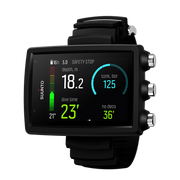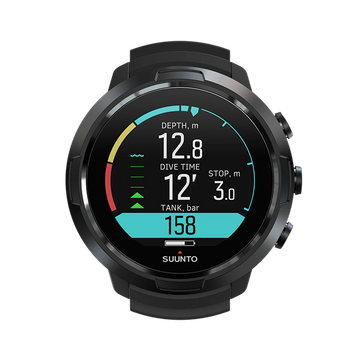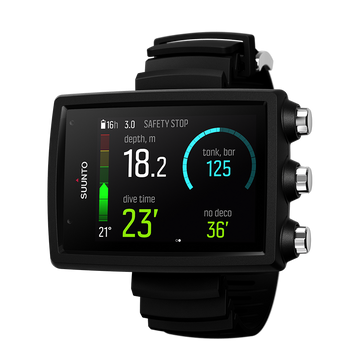

Suunto-blogg

Know your resting and max heart rate
Keeping track of your heart rate is vital for endurance athletes. In this article Suunto partner PerfectPace explains the ins and outs.
Knowing your max heart rate is an important guide for athletes. It gives you a roof for your training and indicates the level of intensity. On the other hand, one of the first signs of overtraining syndrome is an elevated resting heart rate. For endurance athletes doing high volume training this is essential to watch out for.
Identifying your maximum and resting heart rate is vital for the calculation of training zones. Particularly for endurance training these numbers are very important and they are not hard to come to. But there are a few things to consider.
Source: Age-predicted maximal heart rate in healthy subjects: The HUNT Fitness Study
How to find your maximum heart rate
You have probably heard of the formula 220 minus age to get your maximum heart rate. Some say that this formula is not too exact but all in all the results are ok. Unfortunately that is not the case. In most cases the result is way off.
A Norwegian study on more than 3300 healthy women and men has tested their maximum heart rate. The graphic below shows the result. What we can see is that the average values for the whole population is on a straight line. But for most individuals their maximum heart rate is far from that line. The conclusion is that the formula works for the average global population but not for an individual.
When looking at the graph it is also evident that no formula can calculate the individual maximum heart rate. The results are just too scattered. The only way to get to your max HR is via a test.
How to test your maximum heart rate
The maximum heart rate should be tested in your sport. Runners should run and swimmers swim. Triathletes should do a run test. The heart rate is the highest in running of all three sports.A max HR test is VERY demanding. You need to go to your limit and that will hurt.
A typical test for runners looks like this:
Warm up for at least 10 minutes. Now increase your tempo for 5 minutes until you get out of breath. This is the time to start a one minute spurt. It will hurt but you need to max out. Depending on your ability to push yourself you’ll get close to your maximum heart rate.
How to find your resting heart rate
Like for the maximum heart rate there is no formula to calculate your resting heart rate. The resting heart rate is even more individual than the maximum heart rate. Some sport watches can measure your pulse while sleeping. In the morning you will have your resting heart rate.
If you don’t have such a device you can simply measure your heart rate right after you woke up. Untrained have a resting heart rate between 60-80 bpm. Endurance athletes might have only 35 bpm. The reason for such differences are adaptations to the cardiovascular system. The heart gets stronger and more efficient when under high load but also when resting.
Changes of the maximum and resting heart rate
The heart rate changes during your lifetime. Simply by getting older. A new born baby has a resting heart rate of 130-140 and it drops with every year. This is the reason why the formula 220 minus age came up. But there are a lot more factors than just age that influence your heart rate all the time. Therefore you should test again from time to time to make sure your training zones match your physiology.
But there are also short term changes in your heart rate. You won’t be able to reach your max heart rate every day. Also the resting HR is changing from day to day up to 15 beats per minute. reasons can be a cold or over training. By checking your resting heart rate regularly you can spot abnormal stress levels early and adapt your training.
PerfectPace is the endurance training platform for triathletes that takes you a step ahead. For a steady performance gain you had to know a lot about training methodology to plan your training sessions. Especially in a sport like triathlon where three sports need to be planned correctly. This is where PerfectPace steps in. It offers not only unique statistics that up to now were only available in expensive desktop applications but it also helps to create a plan that boosts your performance with the help of artificial intelligence, big data and the latest advances in training science. PerfectPace considers not only your training activities but also rest days, tapering, even injury and your personal strengths and weaknesses.
Lead images:
Photo by Brian Erickson on Unsplash
© Kevin Scott Batchelor
Read more articles
10 reasons to enjoy open water swimming with Suunto
Blaze fresh routes
The benefits of training to music and making your best playlist

4 tips to recover well for your best performance
The Suunto Summer Challenge on Map My Run this July is all about inspiring you to create a workout routine and sticking to it. One oft ignored component to keep your training steady is ensuring you are getting enough recovery time. It can seem like taking a break from running will disrupt your momentum, but oftentimes it does the exact opposite – it freshens you up and reinvigorates you.
Proper recovery time allows the body to adapt in response to your workouts. It also prevents overtraining syndrome – which can knock out of the game for months if you get it. Our running coach Denise Sauriol – the Marathon Whisperer – is a huge advocate of recovery. She sees it as an essential component in any training block. Below are her four tips to do it well.
To participate in the Suunto Summer Challenge all you need to do is sync your Suunto App with Map My Run, get out training, reach new badge levels and be in to win one of four Suunto 7 GPS smartwatches! Full details here.
© Graeme Murray/Red Bull Content Pool
Take the plunge
Swimming is an incredible workout for the whole body. The weight of your body is carried by the water, allowing muscles to relax. It’s a great form of active recovery. Especially the day after your long run. It helps minimize delayed onset muscle soreness.
Try open water swimming if public pools are closed. And if you really want to energize your system, give cold water swimming a go.
Recovery means downtime
Recovery days are meant to be off days not travelling all over town taking care of errands. Make sure you really get the downtime you need. Consider making your recovery days technology-free, and instead go for a swim, a gentle stroll in the park, or read a book on the couch.
The Suunto 7 smartwatch ‘recovery time’ feature tracks your workouts and gives you an estimation on how long you need to recover from your exercise based on stats like duration and intensity. Recovery is a key element of both your training and overall wellness. Remember, it helps prepare you for adventures to come.
Don’t fight yourself
If you have too many days in a row where it’s a mental and physical fight to get through a workout, I recommend you take two to three days off. By doing this you are giving yourself a “control-alt-delete” reset for your mind and your body. You will see on your next run you will come back stronger because of the extra, unplanned day off.
Check your resting heart rate
A way to test if you are overtraining is to check your resting heart rate when you first wake up. If it is abnormally high, this could be a sign that you should reduce the intensity of your plan over the next few weeks until your heart rate is back to normal.
Tracking your daily heart rate is easy with the Suunto 7 smartwatch.
This is the third and final article in the Suunto Summer Challenge on Map My Run happening throughout July. The challenge is all about creating a workout routine and sticking with it!
Lead images:
© Graeme Murray/Red Bull Content Pool
Read more articles
Welcome to the Suunto Summer Challenge
12 must-read running articles to boost performance
Running books to read on your summer vacation

4 tips to keep your training fresh and effective
To continue to improve your running performance and keep it interesting, varying your training is essential. If you do the same thing day in day out, it’s easy for it to become mechanical, resulting in a loss of motivation. Time to mix it up!
In this second article for our Suunto Summer Challenge on Map My Run, happening this July, our coach Denise Sauriol – The Marathon Whisperer – lays out four tips to keep your runs fun and inspiring!
To participate in the Suunto Summer Challenge all you need to do is sync your Suunto App with Map My Run, get out training, reach new badge levels and be in to win one of four Suunto 7 GPS smartwatches! Full details here.
© Graeme Murray/Red Bull Content Pool
Turn up the intensity
If you want to race at a pace faster than you train, you will have to incorporate higher intensity runs into your training. These speed workouts and tempo runs are what I call “gritervals” because you have to call on some internal grit to get through them. They are performed at a much faster pace than your easy runs.
Even when I coach beginner runners, I slowly incorporate speed workouts into their training plan. One reason is that my runners will see their pace improve sooner and the second reason is the sense of accomplishment they get from doing these types of workouts.
If you're new to speed drills, start very gradually. Here's how: to warm up walk briskly for five minutes, then jog at an easy pace for five minutes, then increase your pace to 50% of your maximum capacity for a minute or two, then shift to running more quickly, like around 80% of your max capacity, for 30 seconds (but don't sprint). Repeat this two or three more times and then warm down.
Cross train
It’s important to incorporate cross training into your training routine as it not only mixes things up, so you are less likely to get bored, but it also helps make you a stronger more balanced athlete.
By cross training, you will be working more muscles than just those running strengthens. Since our most valuable commodity is our time, why not choose two of the most effective cross training exercises, swimming and rowing? They both target all your muscle groups in one shot!
Build mental toughness
Adding high intensity workouts doesn’t just help us physically, but I believe they also indirectly improve our mental endurance. Again, this is because we must dig deeper to get through them compared to our easy runs. We are making the manageably-uncomfortable, comfortable!
This is important because our mental endurance is what we call on in the latter part of our races when the legs may want to quit, but the mind will push on bravely. One great way to build mental toughness is to incorporate hill training repetitions.
Run mindfully
Out on your runs, practice being guided by your senses. Once in a while leave your watch and phone at home. Run and really listen to your foot strike, feel your breathing, the wind and elements on your face and body.
Try this presence exercise: touch your index finger to your thumb on each hand in time with your in and out breath. Consciously, look around at what you are experiencing rather than only worrying about time, pace or your heart rate zone.
This is the second article in the Suunto Summer Challenge on Map My Run this July. The challenge is all about creating a workout routine and sticking with it!
Lead images:
© Graeme Murray/Red Bull Content Pool
© Damien Rosso / Red Bull Content Pool

5 tips to be a consistent runner
The feeling of freedom, of almost floating across the earth, is one of the main reasons we run. Those sometimes elusive runner’s highs make all the hard training worthwhile.
Getting to that point, when running feels effortless and liberating, takes consistency. Without it, we stay at a level that involves more perseverance than inspiration. Becoming consistent takes our running to another level.
In this first article in the Suunto Summer Challenge on Map My Run, happening throughout July, we explore what it takes to become a consistent runner. Read on for sage advice from the Marathon Whisperer, and get out training to reach new badge levels to be in to win one of four Suunto 7 GPS smartwatches.
To participate in the Suunto Summer Challenge all you need to do is sync your Suunto App with Map My Run, and start logging workouts. Full details here.
© Graeme Murray/Red Bull Content Pool
Ask the Marathon Whisperer!
Runner and coach Denise Sauriol – nicknamed the“Marathon Whisperer” – is here to help you find your running consistency. No one can question her dedication – she has run 117 marathons! Denise is a certified running coach and the author of the book, Me, You & 26.2, a guide to running your first marathon.
Whether you are just getting started with running or coming back after taking some time off, here are five tips to ignite your training and keep the fire burning!
Plan your training
Training plans provide focus, but it’s hard to design one without having a race or a goal on the horizon. Running without having a goal to shoot for is like studying without having to take a final exam. You are going to be more likely to run if you know you have a race or goal down the road. Your plan will give you short term objectives (daily runs and recovery days) and a long term goal to focus on.
Extra tip: Make sure your plan isn’t too easy or too hard, but just right.
Make running a priority
Running or any exercise for that matter is an investment in yourself. Make your runs official appointments in your calendar. Treat it just like you would a doctor’s appointment. If you don’t schedule it and make it official, you are more likely to let other to-dos take up your run time. To minimize the chance of missing your run, lace up and head out the door first thing in the morning. Even better is to head out for your run before looking at your phone in the morning.
Make a public commitment
Once you sign up for a race or set yourself a goal, tell your friends and family about it. Without them even knowing it, they will be accountability buddies for you as they are likely to ask you about your training throughout the season and ask you about race day. Knowing these questions could come next time you see them will keep you on your toes.
Find a running partner
This not only helps the miles go by, but also helps to keep you more accountable. If you are new to running and or new to your area, check out your local running store as most of them have group fun runs where you are bound to find someone with a similar pace. If you can’t find anyone to run with, bring an e-partner with you to help the miles go by, for example, music, podcasts or audibles.
With the Suunto 7 GPS smartwatch you can connect your headphones to your phone and control music and other audio – adjust volume, pause and skip tracks – straight from your wrist without taking your phone out of your pocket. You can also listen without your phone – the Suunto 7 can store thousands of tracks so you can play your favorite songs or other audio on the go.
Before your next run, load up the three playlists on our Spotify channel prepared by the Mambo Brothers: chilled, upbeat and intense!
Be packed and ready
Whether you are running first thing in the morning, during your lunch break, or after work, pack your running gear the night before so it’s one less thing to worry about when you are ready, set and raring to go!
This article is the first in the Suunto Summer Challenge on Map My Run this July. The challenge is all about creating a workout routine and sticking with it!
Lead images:
© Joerg Mitter for Wings for Life World Run
Photo by Andrew Heald on Unsplash

Welcome to the Suunto Summer Challenge
We all need a push once in a while to reignite our training, and that’s what the Suunto Summer Challenge on Map My Run this July is all about.
It’s simple really; join the challenge on Map My Run and connect your Suunto App account to Map My Run to automatically sync all your workouts.
Then create and stick to a workout routine, logging your workouts to achieve badge levels that unlock raffle tickets to win one of four Suunto 7 GPS smartwatches. The more workouts you log this July, the higher badge levels reached – the better chances of winning!
© @kevinscottbatchelor
JOIN THE CHALLENGE ON MAP MY RUN!
To help inspire your training we’ll be sending you three short articles with tips from running coach Denise Sauriol – nicknamed the Marathon Whisperer.
Our goal is to help you find your training groove!
FOUR BADGE LEVELS
Strong start
This is easy. All you need to do is log one workout!
Training streak
To reach this badge level, you’ll need to workout on four consecutive days.
Halfway there
Now it’s the real test. You’ll need to log 12 workouts to reach this badge level.
Challenge Champion
If you reach this badge level, it means you’ve found your groove. To achieve it, you need to get 24 workouts under your belt. You can do it!
Lead images: Kevin Scott Batchelor

A veteran navigator’s 9 tips for staying on track in the mountains
Suunto’s navigator-in-chief takes you through the essentials to reach your destination safely.
The first two articles (here and here) in this series on way-finding were about skills and preparation. In this one, our resident navigation guru Terho Lahtinen take the training wheels off. Now he distills the essentials to stay on track when you’re on an adventure out in the backcountry.
Terho has been map reading and navigating since he was six years old, when his father taught him. His love of the outdoors grew in the Boy Scouts, and eventually he competed in orienteering at the national level for Finland for more than 20 years, and was lead navigator for adventure racing team Salomon X-Act which competed around the globe for eight years.
“Mountain sports took on a bigger role in my life while adventure racing,” Terho says. “I was the lead navigator in our team. Nowadays, I’m hiking, biking and ski-touring in the mountains as often as I can get away with.”
Clearly explain the route ahead to your group. This ensures everyone learns. © Arc'teryx / Piotr Drozdz
Do a gear check
You’ve just parked at the roadend, get out of your car, and gaze up at the mountains around you. You and your group will be alone there. It’s time to get locked in.
First things first: check you have all the essential gear packed. The right maps, head torches, first aid kit, your trusty Suunto 9 or other GPS, maybe your avalanche safety gear, and that all electronic devices are fully charged.
Brief the group
Before charging up the trail, get your group together and hold a short briefing. This ensures everyone is on the same page and means less questions or confusion later. Talk about your intention for the trip, for example to stay safe, have fun, and be patient with one another.
Then do an overview of the days ahead; where you are going, distances each day, points of interests, and where you’ll be sleeping. Lastly, preview the day ahead, the first leg of the day and what you will be encountering, and when you’ll be having lunch.
Remember to factor in breaks and toilet stops. Photo by Ted Bryan Yu on Unsplash
Keep a schedule
Knowing what you should encounter on each leg of your trip is the key to staying on track. Terho advises scheduling check points (to reach specific locations at particular times), consider safety margins, and when to turn back or change plans, perhaps due to tiredness, darkness, or inclement weather. Review the second article in this series to consider pace and average travelling time. Pause for a few minutes between legs, look at your map, and identify what’s coming up.
“It’s good to have an overall idea of the day, and a more detailed understanding of the next logical leg of the route (usually a few kilometers or the next hour or so),” Terho explains. “Always identify the next clear navigation point you are aiming at to make sure you are staying on the planned route.”
Use handrails
Handrails are distinctive, guiding terrain features that can guide you to your destination. For example, you might go off trail in a certain direction until you reach a creek you’ve identified on the map. Then, you might use the creek as a handrail to find a bridge.
“Suitable handrails are hills, ridges, contours, ditches, lake sides, rivers, or any other long terrain feature that take you towards the desired location,” Terho says. “Be sure you follow the hand rail in the right direction!”
Aim with landmarks
In addition to hand rails, you can also use distinctive landmarks near your next destination as navigation aids.
“Instead of trying to directly find your destination, identify a clear terrain feature on the map that’s near your destination and find that first,” Terho says. “Then you’re sure to get close to where you want and then use more detailed navigation for the last part of the leg.”
The direct route isn't always the fastest route. Study the terrain. © Arc'teryx / Piotr Drozdz
Test your memory
Building on the previous two tips, Tehro suggests you test your memory to see what you recognise. First, review the plan for the next leg of your journey. Look at your map and identify the handrails and distinctive features or landmarks you should see on the way to your next destination. After getting a handle on that, put away your map and follow your plan to the next destination. How many times do you need to look at the map?
“Mentally visualizing the upcoming route in advance and memorizing the essential features, trail forks, points of interest, is a useful technique,” Terho explains. “It helps you to recognize those locations on the go and gives you freedom to put your map or navigation device away and enjoy the surroundings and the activity itself.”
Be willing to hit pause
If you start to get the feeling you have gone astray, don’t keep going. Pause and gather yourself. One of the things that gets people in trouble in the backcountry is when they go off course there they double down and keep moving forward rather stopping, taking stock, and turning back if need be.
“If you are uncertain, stop and check the location with your map,” Terho says. “If you don’t know where you are, don’t continue until you find it out.”
Technology rocks
While for way-finding purists, navigation should only involve a map and a compass, let us speak honestly here; technology is awesome and makes things easier for many of us.
“If you upload your planned route to the GPS in advance, you can immediately see from the screen if you are off course and where the right course is in relation to your current location,” Terho says. “Most GPS also have an off-course alarm, notifying you if you left the intended path.”
A Suunto 9, or other GPS device, includes an altimeter, which is a useful navigational support. It tells you your current elevation to help you identify where you are on the map. You can then stay at the correct elevation for your course. For example, as you cross a mountain saddle.
Getting back on track
In the event you do go off course, remember that not knowing exactly where you are is not the same as being lost. It’s important to stay calm if you realize you don’t know your location. Take a break, sit down, and think things through.
“Start off by spotting landmarks around you to match them with the map,” Terho advises. “Think about where the last point was on the map where you knew where you were, and how long ago, in terms of time, that was. Work out how far you have traveled since then, what you’ve seen around you, and where you might have ended up. When you identify your location, plan the best option to get back on track.”
You have three options: You can follow your track back to the point where you made a wrong turn. Alternatively, you can follow a new route to get back to your planned course. And lastly, you can follow a new route directly to the next destination.
“The tactic you choose depends on the terrain, the skills and experience of your group, and the time of day,” Terho says. “If you are losing light, or in rugged terrain, always take the safest option.”
Stay tuned for the final article in our series on way-finding: Tips and tricks for handling challenging situations in the mountains.
Lead images:
Photo by Krisjanis Mezulis on Unsplash
Photo by Fabrizio Conti on Unsplash
Read more articles:
How to find your way in the mountains7 tips to plan a route in the mountains8 avalanche safety checks to tick off before the ski season7 tips to find a safe route up the mountain































































